Talk with our local travel specialist who can help organize your trip.
A Guide to Discover the Potala Palace, Tibet
Potala Palace, the main winter residence of Dalai Lama, is one of the prominent landmarks in Lhasa, Tibet. Situated at 12,139 feet above sea level at the top of Red Hill, around 130 above the ground, it is one of the highest ancient palaces in the world. Named after a holy hill in South India, Potala means "Abode of the Avalokitesvara" or "Buddha of Mercy." Currently, the fortress serves as a museum that offers unique historical, cultural, and religious attractions.
Potala has always been a primary Buddhist pilgrimage site for centuries. So it is the mecca of Tibetan Buddhism. Potala Palace dwells into two parts: the Red Palace (The Potrang Marpo) for religious practice and the White Palace (The Potrang Karpo) for administrative purposes. You’ll get plenty of chances to witness the vast collection of sacred texts and works of art. Exploring the Potala Palace a UNESCO World Heritage Site will allow you to fully appreciate the unique architectural beauty, Tibetan culture, and heritage. For further detailed information, follow this guide to discover the Potala Palace in Lhasa, Tibet.
Table of Content
- Interesting Historical Facts Of Potala Palace
- Brief History About Potala Palace
- Major Attractions In Potala Palace
- Unique Architectural Style Of Potala Palace
- Red Palace (The Potrang Marpo)
- White Palace (The Potrang Karpo)
- Shol Town
- Zongjiao Lukang Park
- Best Time To Visit The Potala Palace
- How To Get To Lhasa And Visit Potala Palace
- Best Places To Photograph Potala Palace
- Handy Travel Tips
- Final Say
Interesting Historical Facts Of Potala Palace
- In 631-7 AD, the first king of Tibet, Songtsen Gampo, built Potala Palace.
- In 877 AD, the first Potala was destroyed when the Tubo Dynasty collapsed.
- In 1645 AD, for the 5th Dalai Lama Lobsang Gyatso, the second Potala Palace.
- In 1922, for the 13th Dalai Lama, the Palace was renovated.
- In 1961, the Palace was closed due to political reasons.
- In 1980, Tibetan Government again reopened the Potala Palace publicly.
- In 1994, UNESCO listed the Potala Palace on the World Heritage list.
Brief History About Potala Palace
Songtsen Gampo built a Potala Palace in Marpo Ri Hill in the 7th century. Later in the 17th century, the 5th Dalai Lama decided to reconstruct the palace to create an even better building that still stands today. In around 1645 AD, under the reign of the fifth Dalai Lama, the construction of the palace began. In the last half of the eighth century, a fire caused by lightning damaged most of the wooden buildings of the fortress.
In the 9th century, the Potala was destroyed during internal conflicts on the Tibetan land. Later, Dalai Lama started to construct Potala Palace for his residence in Lhasa Valley. At first, the lower part, White Palace, was completed in 1648. After a few decades, the Palace's upper part, Red Palace, was constructed. While constructing this section of the palace, the fifth Dalai Lama died. According to the legends, the Dalai Lama's death was hide to complete the palace's construction.
After that, the Dalai Lama's leading advisor announced his death and finally interred the body of the fifth Dalai Lama in a just-completed stupa (tomb). For the vast and complex construction of a palace, workers need to put tremendous effort. At that time, approximately 7,000 workers, 1,500 artistic painting masters, sculptors, woodcarvers, and girders worked together to complete the entire Potala Palace.
In the beginning, the palace contained a significant number of ceremonial halls, pavilions, religious schools, and monasteries. For some time, some members of the Tibetan government lived here. In 1754, on the southwest side of the palace, the Norbulingka complex was erected. After that, the complex used to be Dalai Lama's winter residence.
Likewise, in 1922, the 13th Dalai Lama renovated the Palace as many wooden buildings of the complex need immediate renovation. In 1961, Chinese forces invaded Tibet, and Dalai Lama's residence was shifted to Dharamsala in India since Potala was closed for many years.
However, in 1980 the Potala was decided to open publicly. Finally, after a considerable renovation and long-time restoration, the complex became one of the most prominent landmarks in the world. In 1994, UNESCO inscribed Potala in World Heritage Sites because it holds cultural, religious, and historical importance.
Looking for more information: What To Pack For Tibet Travel blog might help your trip planning.
Major Attractions In Potala Palace

The famous Potala Palace was the world's tallest most-occupied fortress from 1653 to 1889. The views from every corner of the palace are utterly beautiful. You'll get the splendid views of Lhasa city below the Buddhist complex and the magnificent distant view of Tibetan countryside and snow-capped mountains.
In addition, Potala Palace is the highest palace in the world. It stands on the top of Red Hill at an altitude of 3,700 meters above sea level. Besides the palace's exceptional architectural layout, it is also an entire pack of art treasures of Tibet. Murals, scriptures, thangkas paintings, sculptures of the Potala Palace are unique, displaying the fine traditions and high artistic achievements of ancient Tibetan architectural art. While visiting, you should not miss all these Tibetan arts as they resonance the ancient Tibetan history, religion, and culture.
Murals
Murals are one of the significant and must-see attractions of Potala Palace. It is a unique form of Tibetan painting and is famous for being both mysterious and attractive. In every room, Chapel and stupas, you'll witness different colorful, vivid, and extraordinary murals. These murals depict Buddhist stories, Tibetan history, legends, and ancient Tibet's unique customs and traditions.
Thangka
Thangka are another outstanding attraction of Potala Palace. It is also known as rolling paintings and the most representative form of Tibetan art. Inside the Palace, there are a massive number of exquisite Thangka or Tangka.
Thangka are one of the most Tibetan-style paintings you'll ever see. The thangka artist framed by colored satin and painted on silk, cloth, or paper. The Thangka mainly exhibit Tibetan historical events, religious figures, and Buddha incarnations.
Sculpture
Apart from murals and thangka, you can also find a large number of sculptures and statues. The sculpture art of the Palace is a perfect blend of Buddhist art techniques of China, India, and Nepal. Some of them are clay sculptures, wood carvings, stone carvings, and metal statues. You'll see one of the fascinating sculptures inside this Buddhist building is 10 meters tall, the cast-iron Buddha statue.
Dalai Lama Stupas
The Potala Palace hosts a total of eight stupas covering 700 square meters of area. Each stupa houses are an entire body of the Dalai Lama. Every stupa has different sizes and wooden structures inscribed with gold and precious jewelry. One of the most luxurious and captivating is the fifth Dalai Lama's stupa. It is 15 meters tall and exquisitely wrapped in gold. This elegant stupa includes more than 1500 jewels, including diamonds, rubies, pearls, agates, and emeralds.
Scriptures
You'll find a large number of (around 40,000 volumes ) sculptures inside the palace. Most of the antique texts are Buddhist scriptures, and the rest is Mandarin, Sanskrit, Tibetan, Manchu, and Mongolian. The most treasured is the Tibetan Kagyu of the Tripitaka. It was well-written with ink made of green diamond, gold, pearl powder, silver, iron, coral, red copper, and white conch shell.
Artifacts
There are numerous valuable artifacts from Tibetan history, religion, and culture within the Potala Palace. The elaborative work of art tells many stories of the Dalai Lama and the history of the Tibetan people. All these incredible artworks depict different customs and traditions.
Unique Architectural Style
It's no wonder that Potala Palace is famous for its massive structure or magnificent appearance. The main building of the castle is 115 meters high with a total of 13 stories. The complex comprises stone, wood, and granite walls. It consists of 1,000 rooms, including assembly halls, stupa halls, shrines, prayer rooms, monks' dormitories, government offices, temples, and courtyards.
Built on a hillside and uneven terrain, the interior layout of the palace is asymmetrical. In terms of architecture, Potala Palace is not only a fortress but also is an essential religious sanctuary. Potala Palace comprises White Palace, Red Palace, Shol Town at the base of the palace, and Zongjiao Lukang Park at the back of the castle.
Red Palace (The Potrang Marpo)

In the 19th century, Red Palace was built and higher between the two palaces. Located in the center of the castle, the design of the Red palace symbolizes the shape of Mandala (Sanskrit for 'circle') layout. Built in 1690, during the 6th Dalai Lama, the palace consists of tomb stupas, chapels of Buddha, and a scripture hall. Dalai Lama used this palace as a house of prayer. This part of the palace is devoted to the study of Buddhism and the advancement of religion.
Red Palace contains a total of 13 storeys and covers an area of over 16,000 square meters. It is the tallest part of the Potala Palace. The space from the ground to the fourth floor is a warehouse. On the seventh to the ninth floor, you can visit various chapels of Buddha and scripture halls in which there are many statues of Buddha. Similarly, from the tenth to the thirteenth floor of the palace, there are golden tomb stupas of successive Dalai Lamas. Rich decorative paintings, other jewels, and ornaments decorate all these golden stupas and statues. The highlighted architecture inside the Red Palace are listed below:
The Great West Hall
The main central hall inside the Red Palace is the Great West Hall. It consists of four great chapels that manifest the glory and power of the Fifth Dalai Lama. The center of attraction of the hall is alluring murals resonant with Persian miniatures depicting the life events of the Fifth Dalai Lama. On the east side of the wall outside the main entrance, you'll get a glimpse of his visit to Emperor Shun Zi in Beijing. A special cloth from Bhutan wraps the pillars and columns of the hall.
The Saint's Chapel
On the north side of the main hall in the Red Palace, there is the holiest shrine. You'll witness a large blue and gold inscription over the door, which was written by the19th century Tongzhi Emperor of China proclaiming Buddhism a "Blessed Field of Wonderful Fruit." This Chapel is similar to the Dharma cave from the 7th century. It contains a statue of Avalokitesvara and two of his attendants. A dark passage leads into the Dharma Cave on the floor below, where Songtsen Gampo gets insight into Buddhism. Inside the cave, you'll get a glimpse of the image of Songtsen Gampo, his wives, chief minister, and Sambhota.
The North Chapel
The North Chapel sits on a crowned Shakyamuni Buddha on the left side, and the Fifth Dalai Lama on the right is seated on magnificent gold thrones. Both statues had equal height, which implies their equal status. On the far left side of the Chapel, there is the gold stupa tomb of the 11th Dalai Lama, who died as a child. Right then, there are the rows of benign Medicine Buddha referred to as the heavenly healers. On the right of the Chapel, you get to see Avalokiteshvara and his historical incarnations, including Songtsen Gampo and the first four Dalai Lamas.
The South Chapel
In the South Chapel, the main attraction is the 8th-century Indian Magician and Saint Padmasambhava. On the side of his left knee, there is his associate Yeshe Tsogyal, and by his right side, there is his wife from the native land of Swat. On the left side of his statue, there are eight holy manifestations meditate with an interned gaze. On his right side, there are eight furious manifestations wiled instruments of magic powers to subdue the demons of the Bon faith.
The East Chapel
Dedicated to the founder of the Gelug tradition, the Tsong Khapa, the East Chapel of the Red Palace offers an exclusive sight of Tibetan art and history. Lamas of Sakya Monastery surrounds his statue in the East Chapel. Besides, there are many other statues made of various materials and showcase different noble expressions.
The West Chapel
The West Chapel consists of five golden stupas of different Dalai Lama. The central stupa of preserved Fifth Dalai Lama is enormous, which is 14.85 high. Among many preserved valuable cultural relics, the stupa of the Fifth Dalai Lama is the most utterly beautiful and biggest one. It is beautifully coated with solid gold and bejeweled with pears and other semi-precious jewels. Here you can take a glance at the well-preserved marvelous curtain of brocade. Next, the funeral stupa of the twelfth Dalai Lama lies on the left, and the stupa of the tenth Dalai Lama is on the right side. The other stupa of the thirteenth Dalai Lama is about 22 meters high. You'll notice important scriptures on both ends of stupas.
First Gallery
The first gallery lies on the floor above the West Chapel. Large windows pass enough light and ventilation to the Great West Hall and its Chapel below. Between the windows, enticing murals demonstrate the Potala's construction in detail.
Second Gallery
From this part of the palace, you can access the central pavilion to the castle.
Third Gallery
The Third Gallery contains many dark rooms where there are many extensive collections of statues. Most of the sculptures are bronze, and you'll notice other miniature figures of copper and gold. On the south side, you can observe the chanting hall of the seventh Dalai Lama. On the east, you can find the entrance connecting the section to the Saints chapel and the Deyangshar between the two palaces.
Likewise, another significant highlight of the Red Palace is the golden roofs, and most of the roofs are gilded bronze. On the top of the palace, you'll behold golden domes of the shrines and chapels, with one to five flower-and-bell-shaped spired, which serve as the lightning conductors. At the top, there stand three small pagodas. On a bright sunny day, the golden room amazingly will glitter under the sunshine, exhibiting the beauty of the Holy Palace.
Featured Trips
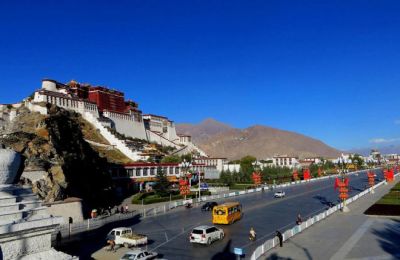
Bhutan Nepal Tibet Tour - 14 days
Discover hidden places with this once-in-a-lifetime Bhutan Nepal Tibet Tour-14 days. Explore medieval palaces, ancient Buddhist monasteries and fortresses.
Inquire Now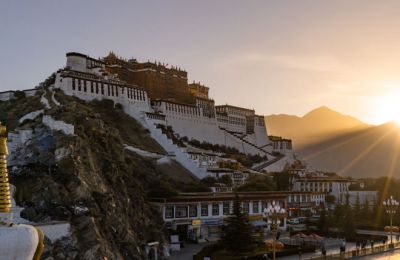
Lhasa and Tsedang Tour - 6 days
Lhasa and Tsedang Tour is one of the exciting cultural tours of Tibet, often called the "Roof of the World." In this short tour, you'll get to explore both prominent landmarks in Lhasa city- the heart and soul of Tibet and Tsedang city- the cradle of Tibetan civilization.
Inquire NowWhere to travel next?
Get help from our travel specialists for holiday ideas that matches your interests.
White Palace (The Potrang Karpo)

Another vital wing of the Potala Palace is the White Palace. The white wall of the building signifies peace. Further, it is home to ten successive Dalai Lamas and their courts. Red Palace is more religious-centric, while White palace is more focused on the administrative section. For an extended period, this part served as the office building of the Tibet local government. It used to be former offices of the Tibetan government, governmental assembly halls, and other official offices.
In 1649, the Fifth Dalai Lama and the Tibetan government moved into this section. Built during the lifetime of the Fifth Dalai Lama, the fortress contains two parts named the east sunlight hall and the west sunlight hall. Here you'll encounter plenty of sunshine. After that, in the early twentieth century, the 13th Dalai Lama extended its size today. The seventh floor of the palace is the living quarters of Dalai Lama. Similarly, on the fifth and sixth floors, there are other living quarters and offices.
Shol Town
After entering the Potala Palace, you'll witness the Shol Village or Shol Garden at the palace's base. Exploring the surrounding, you'll get immediate insight into the history of the Tibetan people. One of the must-see attractions of the town is the Treasures Hall. In an earlier period, this place used to be the Tibetan Government Department. At present, it is a museum where you can witness the history and development of Tibet.
Moreover, based on the different functions, the museum’s architecture can be divided into three categories. First is the workplace, where you can find the coin casting institutions, jails, and administrative, tax, and judicial authorities. Next are the institutions that provide daily living services to workers of winemaking workshops and sweet tea workshops. And the last one is the mansions and residences of Lamas and officers.
While strolling around the Shol Village, you can wander along the long river of Tibetan history. The village people have witnessed the remarkable transformation of Tibet from the rule of feudal serfdom to a new independent, autonomous region. Overall, while visiting the village, you'll get deep knowledge about the holy land of Tibet.
Zongjiao Lukang Park
Located at the back of Potala Palace, Zongjiao Lukang Park is the best place to take pictures of the inverted reflection of Potala Palace from the lake. This place was the resort where the Tibetan government officials used to visit for entertainment purposes in history. Thus, local Tibetan people considered this place the best to hang around with bridges, lakes, birds, fish, various colorful flowers, etc. Most of the local people visit the park to enjoy their leisure time.
Featured Trips
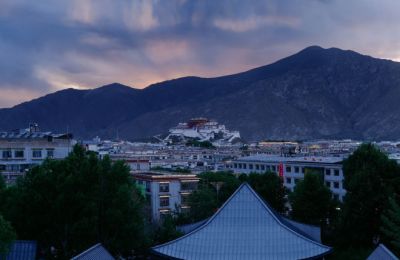
Lhasa Short Tour - 4 days
Lhasa Short Tour is an awe-inspiring 4-day itinerary that provides an excellent opportunity to explore the culturally rich, mysterious Lhasa city in Tibet
Inquire Now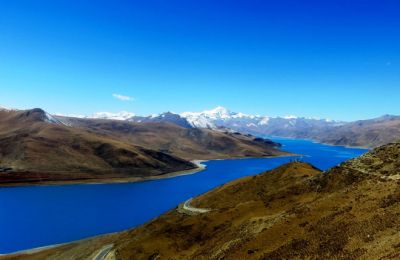
Lhasa and Yamdrok Lake Tour - 5 days
Lhasa and Yamdrok Lake Tour cover the famous landmarks in Lhasa city and a scenic ride to Yamdrok Lake. This 5 Days cultural tour is suitable for all age groups.
Inquire NowWhere to travel next?
Get help from our travel specialists for holiday ideas that matches your interests.
Best Time To Visit
The best time to visit Tibet and Potala Palace is from April to October. However, you can visit Potala Palace all year round. The peak season to visit the Palace is July to October. The palace is well-preserved, so the Tibetan government has limited the number of visitors per day and the visit duration, especially during the peak season.
Basically, in peak season, the palace receives around 3,000 visitors per day. All of them have approximately one hour to tour around the castle. If you are booking with us, we'll do our best to reserve your tickets in advance.
Note: Your visiting schedule might be slightly different (morning or afternoon) from the itinerary.
How To Get To Lhasa And Visit Potala Palace
In general, there are two ways to enter Lhasa Valley. One of them is to fly into the Lhasa Gonggar Aiport, and another one is to take a train from mainland China and enter the city. However, you have to obtain a Tibet Travel Permit through a local travel agency in advance for both options.
Located in the northern region of Lhasa, Potala Palace is 70 kilometers away from the Lhasa Gonggar Aiport and 20 kilometers from the railway station. Thus, once you arrive in Lhasa, you can easily visit Potala Palace with your Tibetan tour guide and members. You'll get an hour inside to explore the palace. Besides Potala Palace, many other adjacent temples, gompas, stupas, and chapels are must-see tourist attractions. Every year, many Buddhist pilgrims travel to visit the sacred site of Tibet.
Important Note:
International tourists cannot travel independently in Tibet. So, the best way to wander around is to travel to Lhasa with your local Tibetan guide. For more details, you can contact any of our travel consultants who will help to customize the Tibet tour itinerary according to your preference. You can just contact us to customize the trip.
Recommended Read:
How to Travel to Tibet?
How to Travel from Kathmandu to Lhasa?
How to Travel to Tibet from the United States
Best Places To Photograph Potala Palace

No wonder Potala Palace is one of the glorious palaces in Lhasa, Tibet. Every year, numerous travelers visit the palace and capture wonderful pictures from different angles and spots. Here are the best four places where you can snap a fantastic view of Potala Palace:
Chakpori Hill
The widely famous and believed to be the best place to take pictures of Potala Palace is Chakpori Hill. Located to the southwest of Potala Palace, you can get there after a few minutes' walk from the west gate of the palace. From the hill, you'll get an astounding view of Lhasa city and its surrounding. The best place to enjoy and capture the fabulous shot of the sunrise and sunset is at Potala Palace. The incredible time to take a picture of the palace is in the early morning when the first rays of the sun strike in the fortress.
Potala Palace Square
The highest square in the world, Potala Palace Square, is another excellent place to take a standard front picture of the palace. Undoubtedly, the magnificent structure of Potala Palace grabs your attention from a distance. The palace is equally attractive at night when it illuminates different colorful lights. From the square, you'll get the best picture of the stunning night view of the palace.
Palubuk Monastery
While walking around the outskirt to the west foot of Chakpori Hill, you'll notice a Palubuk Monastery standing on the hillside. Inside the monastery, there are the statues of Shakyamuni and his disciples. All these statutes are carved naturally from the rock on the hill. You can use this place as a foreground under the sunset glow and shoot excellent photos of Potala Palace.
Dragon Lake Park (Zongjiao Lukang Park)
Located north of Potala Palace, Dragon Lake Park is another best place to take the reflection shot of Potala Palace. You can enjoy the striking view of the palace and also get snaps of Tibetan opera performances during Shoton Festival. Nowadays, this place has become a perfect place for tourists to capture the best shot of the Potala Palace.
Handy Travel Tips
- You require good physical conditions as you have to climb around 100 meters or 300 steps at high altitudes. Enjoying the view, you need to walk slowly to avoid the risk of altitude sickness or any other sort of discomfort.
- Inside the palace, you cannot take any technical equipment such as a camera or any other recording device.
- You can not carry any flammable items such as lighters, cigarettes, alcohol, sprays, or sharp objects such as scissors, knives, or even nail cutters. So, try to carry minimal stuff when you visit Potala Palace, or you can even deposit your bags at the entrance.
- While visiting Potala Palace, you should be aware of the taboos of Tibetan Buddhism. You are not allowed to point your fingers at the statues. Don't wear revealing clothes, sunglasses, hats, etc.
If you are planning for a Tibet tour, you can join us for your better travel experience. Our travel consultant will help you arrange the best Tibet Lhasa Tour according to your preferences and needs.
Final Say
Undoubtedly, the Potala Palace is one of the notable landmarks in Tibet and the whole world. You'll get stunned with the unique architectural layout of the complex and the well-preserved treasures where you can witness the previous art and experience Tibetan culture and history.
So, Potala Palace is the must-visit palace in all Tibet Tours. You'll feel the spiritual ambiance, and your soul will get rejuvenate and energetic. Hope this guide helps you discover the Potala Palace. So make sure to visit the remarkable Potala Palace, which genuinely implies the symbol of Tibet.
- Written by: Naba Raj Amgai
Updated: Oct, 7, 2021

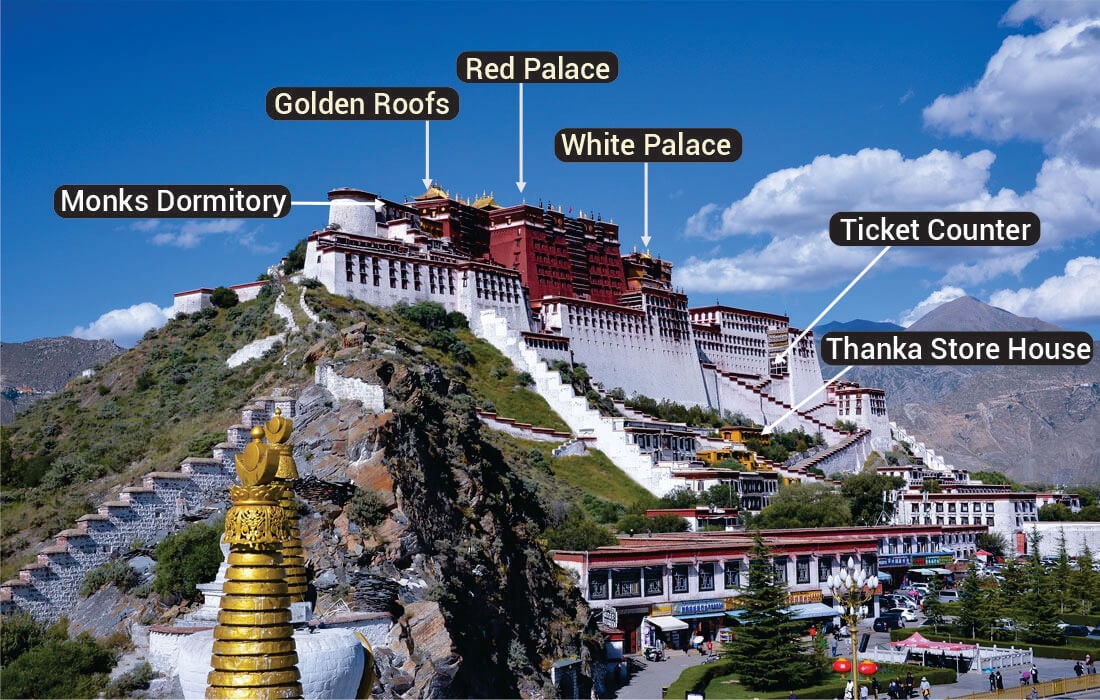
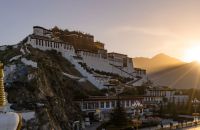
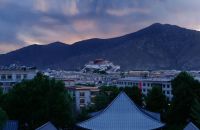
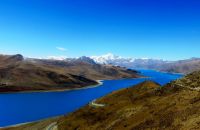
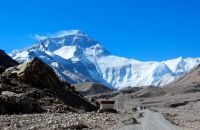
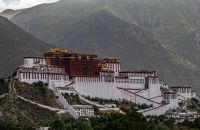





.jpegXkO.jpeg&width=200&height=130)










Recent Comments